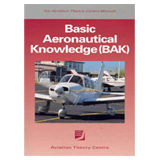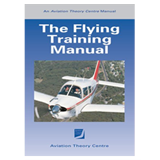[wp_eMember_compact_login]
Medium Turns
Well, things are really coming together now. Previously you’ve learned to fly straight and level and also climb and descend. Accurate medium turns are the topic today, which means your well on the way to completing the basic fundamentals of flying and beginning circuit training.
You’ve probably already manoeuvered the aircraft through some turns during your previous lessons, and today all we’re going to do is give you some techniques to enable precise turns at constant angles of bank and altitudes.
You’ll also put into practice your climbing and descending skills when you learn to conduct climbing and descending turns, so be sure to revise the techniques to enter and level off from climbs and descents before this lesson.
During your Brief, you’ll learn the following and more:
- Introduction to the aircraft ‘forces’ during a turn
- Factors affecting the turning performance of an aircraft
- Techniques to establish and maintain a 30 degree angle of bank (medium) level turn
- Techniques to establish and maintain climbing and descending turns
Lesson Techniques
Turning is a simple process. As long as you keep your eyes outside and ensure the aircraft’s angle of bank and nose attitude remain constant, you’ll succeed.
There are a number of ways to learn the entry, maintenance and exit from a turn, here’s one:
L – lookout… before you begin the turn
B – Roll… the wings to achieve the desired angle of bank
B – Balance… with rudder pedals to keep the ball centered. Remember, the faster you roll, the more rudder you’ll need
B – Backpressure… The nose must rise slightly to ensure we don’t lose altitude during the turn
You can conduct the same sequence of steps to exit the turn. However, replace “L – Lookout” with “A – Anticipate”. That is, you need to anticipate the end of the turn and start rolling out BEFORE your reach your reference point so you don’t overshoot.
When you’ve gained proficiency with level turns, it will be time to begin climbing and descending turns. These take quite some coordination and will put into action all that you’ve learned so far. Be sure to have revised climbing and descending techniques before this lesson.
Our retro Instructor is back again with a few tips on medium level turns:
Resources
Readings
Before attending your Briefing and Lesson, you should have read the following:
- The Flying Training Manual – Chapters 8
- Basic Aeronautical Knowledge (BAK) – Chapter 6, Turning section. Additional general reading: start Chapter 4
Useful Links & Files
Medium Turns Briefing
Download 4.09 MBInstructor’s Tips
- As with previous lessons, it’s better and actually easier if you look outside during manoeuvres! Don’t get stuck watching the instruments.
- Once the turn is established and you’ve centered balance ball, you can forget about it – it won’t change until you change the angle of bank\
- Be sure to look out not just before your turns, but DURING them also
- For climbing or descending turns, take your time setting and trimming a straight climb or descent first, then add the turn afterwardstor assistance
Questions
This section gives you an opportunity to search for information, which is a skill that will come in handy during your training. Use resources such as your text books or the Internet to answer the following questions.
Slipping and Skidding are commonly used terms. What do they mean, and how do you differentiate between the two?
- If wish to conduct a turn to the right, which rudder pedal should you push when entering the turn?
- Why do we conduct a climbing turn with only 15 degrees angle of bank, but a level turn with 30 degrees?
- What are Differential Ailerons?
- What are Frise Ailerons?
- What is the best range glide speed for your aircraft?
Learning Objectives
By the end of this Briefing and Flight, you will be expected to be able to:
- establish and maintain and exit medium level turns
- conduct climbing and descending turns
- perform a pre-flight inspection of your aircraft without assistance from your instructor
- conduct the aircraft start and shutdown procedures with minimal Instructor assistance


